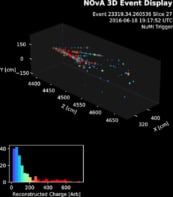Particle physicists released an outline design for the proposed International Linear Collider (ILC) at a meeting in Beijing this morning. The design details the components needed to build the 31 km-long facility and comes with an initial estimate of the collider's cost: a cool $6.5bn for the core project. Researchers see the ILC as the next big facility after the Large Hadron Collider, which is due to switch on at CERN later this year.
According to the so-called Reference Design Report, the ILC will consist of two linear accelerators facing each other head on, each 12 km long, with one accelerating electrons and the other positrons (anti-electrons). The collisions, which will be recorded in two huge detectors, will take place at energies of up to 500 gigaelectronvolts. Physicists hope that the collisions will allow them to examine the Higgs boson and perhaps a range of exotic “supersymmetric” particles, as well as help them pin down the nature of dark energy and dark matter and look for possible extra dimensions.
The report was drawn up by a group of 60 scientists, known as the Global Design Effort (GDE), under the leadership of Barry Barish, a physicist at the California Institute of Technology. The group was formed after a previous panel chaired by Barish decided that the collider’s accelerating cavities should be built using superconducting technology pioneered at the DESY laboratory in Germany rather than a rival copper technology developed by other scientists in the US and Japan. The GDE drew up a “baseline” design for the ILC in late 2005 and has now refined this to in order to reach the desired energies and luminosities in the most efficient way.
The GDE estimates that the collider itself will cost $4.9bn in today’s prices, and that the costs associated with the site, such as digging the tunnels to house the machine (some sections of which will be several hundred metres underground) will add another $1.8bn. Then there is the money needed to pay for the labour – an estimated 22m man hours – as well as the cost of the detectors. According to the International Committee for Future Accelerators, which oversees the global collaborations needed to build high-energy colliders, these costs are comparable to those of the Large Hadron Collider.
Now that the ILC’s reference design has been completed, work will begin shortly on a more detailed “engineering design”, which should be finished by some point in 2009. At the same time negotiations will take place on the thorny issue of where to build the ILC. Assuming that a site can be chosen, construction could begin by around 2010. The machine’s length could subsequently be increased to 50km, resulting in collision energies as high as 1000 gigaelectronvolts.



